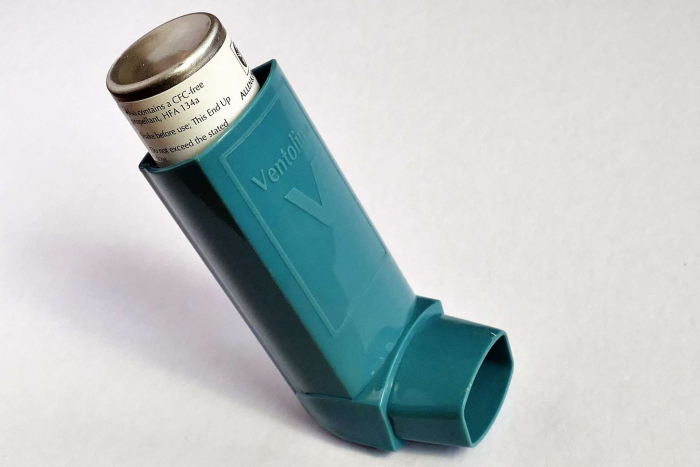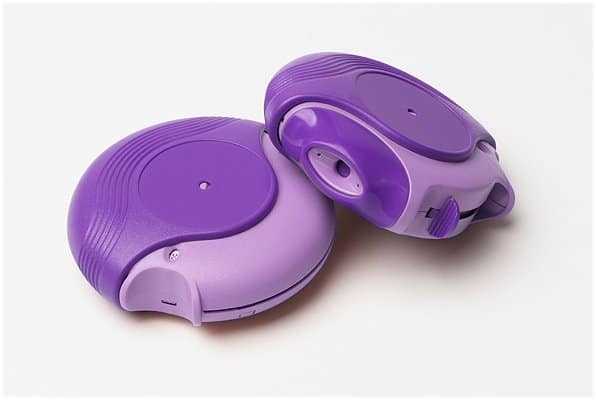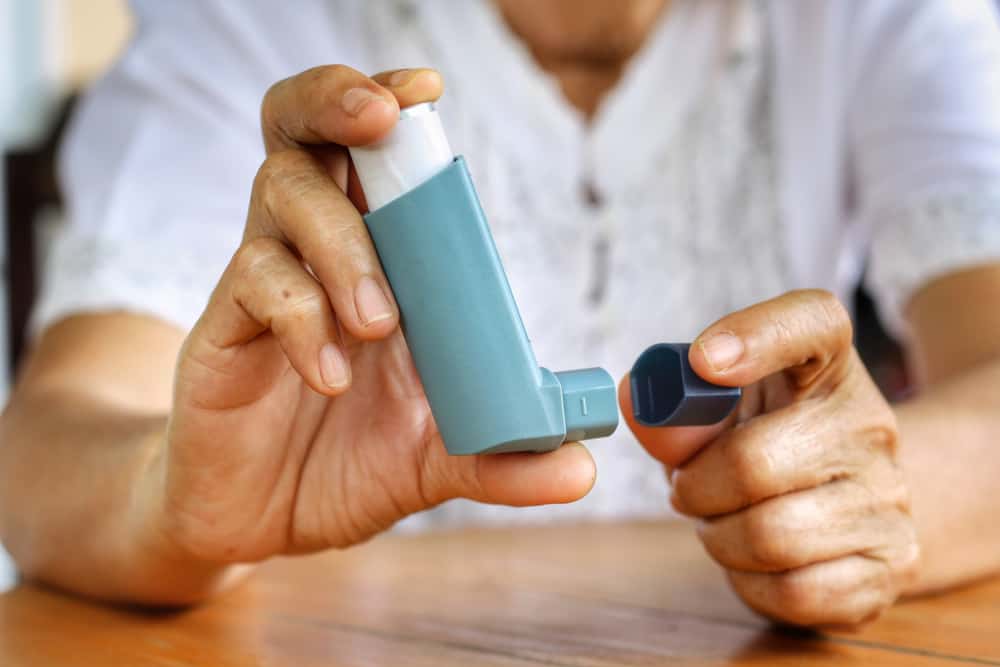Benefits, How To Use, and Care
For those of you who have asthma, the presence of an inhaler will be very helpful if one day the asthma recurs or recurs. However, if this is the first time you’ve been prescribed an inhaler as an asthma treatment, don’t just spray it first. There are several things you need to pay attention to so that the work of inhaler drugs to treat asthma is more efficient and effective. Check out the full explanation below!
Get closer to the different types of inhalers
Quoted from the Mayo Clinic, an inhaler is a spray model drug to treat asthma symptoms. This inhaled drug is equipped with a small tube filled with medicine that is inserted into a small spray body with a funnel at the end. This funnel will deliver the medicine directly to your respiratory system.
Compared to a nebulizer, the inhaler is lighter and more compact, making it easy to carry anywhere. This is because the nebulizer has a larger size so it is not easy to carry and requires power.
Types of asthma inhalers based on the shape of the device
Based on the shape, inhalers to treat asthma are of two types. Here are the differences between the two that you need to pay close attention to.
1.Measured dose inhaler (metered dosage inhaler)

Metered dose inhalers use a chemical propellant to push the drug out of the plastic funnel. When asthma recurs, immediately inhale the medicine from this inhaler. Asthma medication will go directly into the airway and relieve symptoms.
You simply put the inhaler into your mouth and tighten your lips against the mouthpiece. Press the inhaler once and then inhale through your mouth slowly.
If using this type, you should remember or record how many doses of asthma medication you have taken. Inhalers to treat this type of asthma are sometimes not included with a dose meter. As a result, you may not know how much drug you have been inhaled.
2.Dry powder inhaler (dry powder or breath-activated inhaler)

This asthma inhaler is a dry powder, not a spray that you can inhale directly from the device. Compared to metered dose inhalers, this inhaler is considered easier to use.
The reason is, you do not need to press the inhaler and also do not require a lot of coordination when taking a breath and inhaling the drug.
In order for the medicine to pass directly to the lungs you must inhale the powder from the inhaler quickly and firmly. This inhaler is usually available as a single inhaler. This is to prevent the use of excessive doses.
Types of asthma inhalers based on the medication
If divided based on the type of asthma medication contained in it, there are 2 types of asthma inhalers, namely reliever inhaler containing albuterol or salbutamol and preventer inhaler containing corticosteroids.
1. Reliever inhaler
Just like his name, reliever inhaler is a type that functions to relieve asthma symptoms. This inhaler contains albuterol, also known as the ventolin inhaler. Usually, the color of this inhaler is blue.
Ventolin inhalers can work quickly in less than 15 minutes so they can be used as a way to deal with asthma attacks. This inhaler is claimed to be very effective as a reliever drug for mild to severe asthma attacks.
2. Preventer inhaler
In contrast to ventolin, preventer inhaler contains corticosteroids. These asthma inhalers are usually brown, red or orange in color and are used for asthma prevention purposes.
This type of inhaler has a long working effect so it is used regularly as well as daily.
This type of inhaler is usually used for a number of purposes, such as controlling asthma, reducing symptoms, and reducing the need to commute to the hospital for consuls.
Corticosteroids work to reduce inflammation of the airways and only a small amount is absorbed by the body. However, steroids are used in preventer inhaler to relieve asthma symptoms takes a longer time until the effects are felt.
Determine which type of inhaler is most appropriate for asthma
Determining the best asthma inhaler is not as easy as turning your palm. There are many things that need attention. Some things you need to pay attention to when choosing an asthma inhaler include:
- The type of asthma medication needed
- How the inhaler works
- Your overall health condition
Seeing the various things above, you can discuss with your doctor to determine which asthma spray is right for you.
How to use the correct asthma inhaler?
Not only choosing the right type, knowing how to use the right asthma inhaler can also help you get a more effective treatment. For that, see how to use the following asthma inhaler drugs:
How to use an asthma inhaler

Here are some tips for using your inhalers properly and more effectively:
- If you need to use more than one puff per dose, you will need to allow time between puffs. If you are on a fast-acting bronchodilator, give yourself a 3-5 minute break. For other types, give pause 1 minute.
- Don’t inhale and exhale too quickly between sucks.
- Sit up straight or stand straight while using the inhaler.
- Shake the inhaler well before inhaling it.
- Immediately inhale as soon as you press the inhaler.
- Hold the breath for at least 10 seconds after inhaling.
Take advantage of help spacer

If you are still having trouble using the inhaler, you may need to use one spacer. Spacer is a tool that helps you use your inhaler. Spacer stretched out from mouthpiece and help the drug move slowly to the mouth.
Spacer mostly used by the elderly and children to make it more efficient. If you think that spacer can help, you should tell your doctor or pharmacist.
Keep spacer keep it clean using only warm, naturally drained water throughout the night. Avoid wiping spacer with a dry tissue or cloth. This can cause debris or fibers to remain and create static electricity inside spacer. Drugs that enter the lungs through spacer also can be reduced.
How to clean asthma inhalers properly
It is important to keep the inhaler clean, especially on the parts mouthpiece. Here are some steps that can help you keep your inhaler clean.
- Remove the metal can from the inhaler (if your inhaler is metered-dose).
- Make sure there are no objects clogging the area.
- Rinse with lukewarm water only mouthpiece and the lid.
- Let it dry naturally overnight (don’t use a cloth to dry it).
- In the morning, put the metal can back in. Put the lid on.
- Don’t rinse other parts.
What are the possible side effects of the inhaler?

Please note that each type of inhaler contains different substances. So, the side effects that occur will also be different.
Not everyone will experience side effects. In addition, the possibility of new side effects appears after long-term use.
The following are the various side effects of inhalers used by people with asthma.
1. Side effects of the reliever (ventolin) inhaler
Mild side effects of the asthma inhaler, ventolin, include:
- Headache and dizziness
- Sleep disturbance or insomnia
- Feeling pain in the muscles
- Runny or stuffy nose
- Mouth and throat feel dry
- Cough
- Hoarseness and sore throat
However, you need to be aware if the following side effects appear and consult a doctor immediately. Some of the serious side effects of inhalers include:
- Chest pain, palpitations and irregular heartbeat
- Tremor
- Anxiety symptoms
- Blood potassium levels drop, causing muscle weakness, feelings of weakness, and extreme thirst
- High blood pressure
- Paradoxical bronchospasm, chest tightness and difficulty breathing
2.Side effects of preventer inhalers (with corticosteroids)
The following are some of the symptoms of preventer inhaler (corticosteroid) side effects that will appear:
- Mouth and throat sore
- Yeast infection of the mouth
- Cough
- Loss of bone strength in adults
- Cataract
- High blood pressure in the eye area and the appearance of glaucoma or fluid in the eye. This happens if you use corticostredoid inhalers for a long time.
However, inhaler-type corticosteroids do not cause serious side effects such as using other forms of corticosteroids, such as pills or injections that can cause bone loss.
3. Other side effects of inhalers
Long-term use of asthma inhalers can cause a number of side effects. Some of the side effects that may arise include:
- The voice becomes hoarse. This condition is called dysphonia. This condition is considered less serious which can be resolved over the next few minutes.
- Oral thrush. Candida yeast infection in the mouth can actually be prevented by gargling with mouthwash that contains alcohol.
- Sore throat, irritation of the tongue and mouth
- The appearance of white patches in the mouth
- Osteoporosis. The risk of weakening of the bones in older people may increase.
4. Side effects of asthma inhalers on teeth and mouth

According to a study from the journal Lung IndiaSome asthma inhalers, including corticosteroid inhalers, have adverse side effects on oral health based on dosage, frequency of use, and duration of use.
Some of the side effects associated with this medication include:
- xerostomia (dry mouth)
- dental caries
- candidiasis
- gingivitis (swollen gums)
- periodontitis
- changes in taste in the mouth
Side effects of asthma inhalers on oral and dental problems: cavities

Cavities can be the main side effect, which can end up becoming bigger and deeper cavities. Still from the same research journal, after using an asthma inhaler, it was found that there was a decrease in pH which was quite drastic.
This decrease in pH eventually triggers demineralization (loss of mineral content) tooth enamel after 30 minutes of using the inhaler. Over time, this condition makes the enamel eroded even more.
In addition, corticosteroid inhalers are a weak type of organic acid drug, and generally cannot be metabolized by oral bacteria. The next side effect is, the balance of flora in the mouth is disturbed so that it is easier for bacteria or fungi to grow in the mouth.
Therefore, people who use this asthma inhaler are more prone to cavities.
First, because the enamel is being eroded, it becomes easier for holes to be made. Second, there are lots of bad germs in the mouth that can easily attack teeth that have eroded their enamel protection. It is easier for germs to move around, and cavities can occur more quickly.
That is why, those who use asthma inhalers, especially those with corticosteroids, must take care of their oral health, in addition to their respiratory problems.
How to prevent side effects of inhalers?

You may be one of the people who regularly uses inhalers to prevent asthma symptoms. This, of course, makes you worry about the side effects that may arise.
As explained above, this asthma inhaler is unlikely to cause serious side effects if you use it as directed. There are several ways you can do to prevent side effects, including:
- Use in the right dosage. Use an adjustable dose of asthma inhaler to prevent overdosing.
- Wash your mouth after using the inhaler. Make sure that no water is swallowed after you wash your mouth. The impact could be worse when corticosteroids enter the stomach.
- Prevent the factors that cause asthma so that asthma does not recur frequently. It could be that everyone has different causal factors. But in general, air changes and the level of air cleanliness affect asthma in many people.